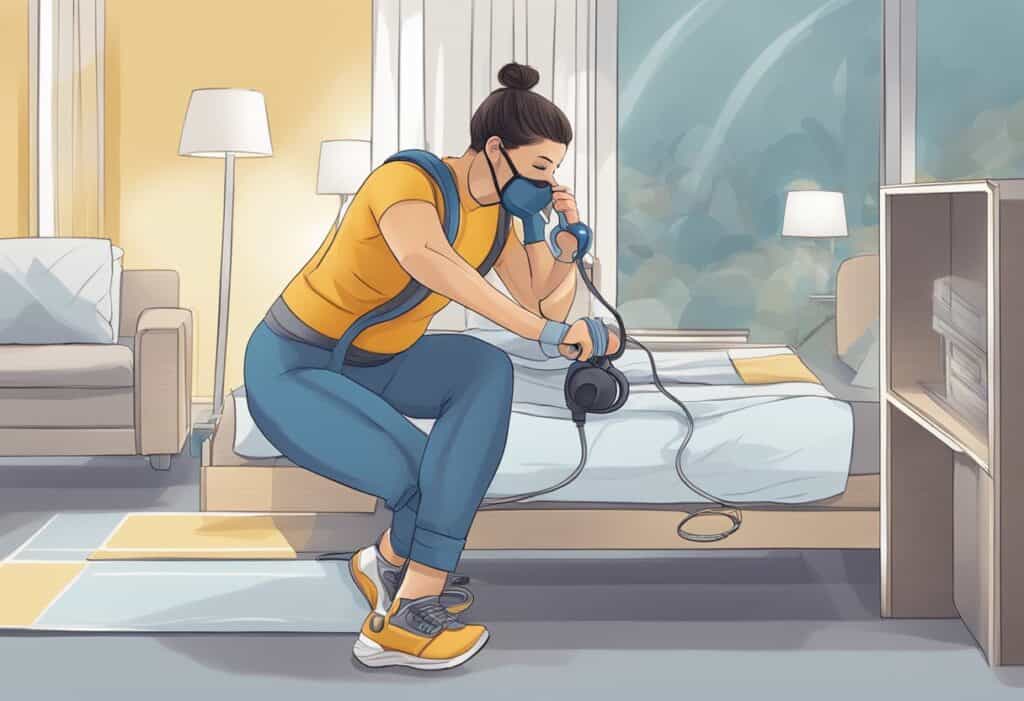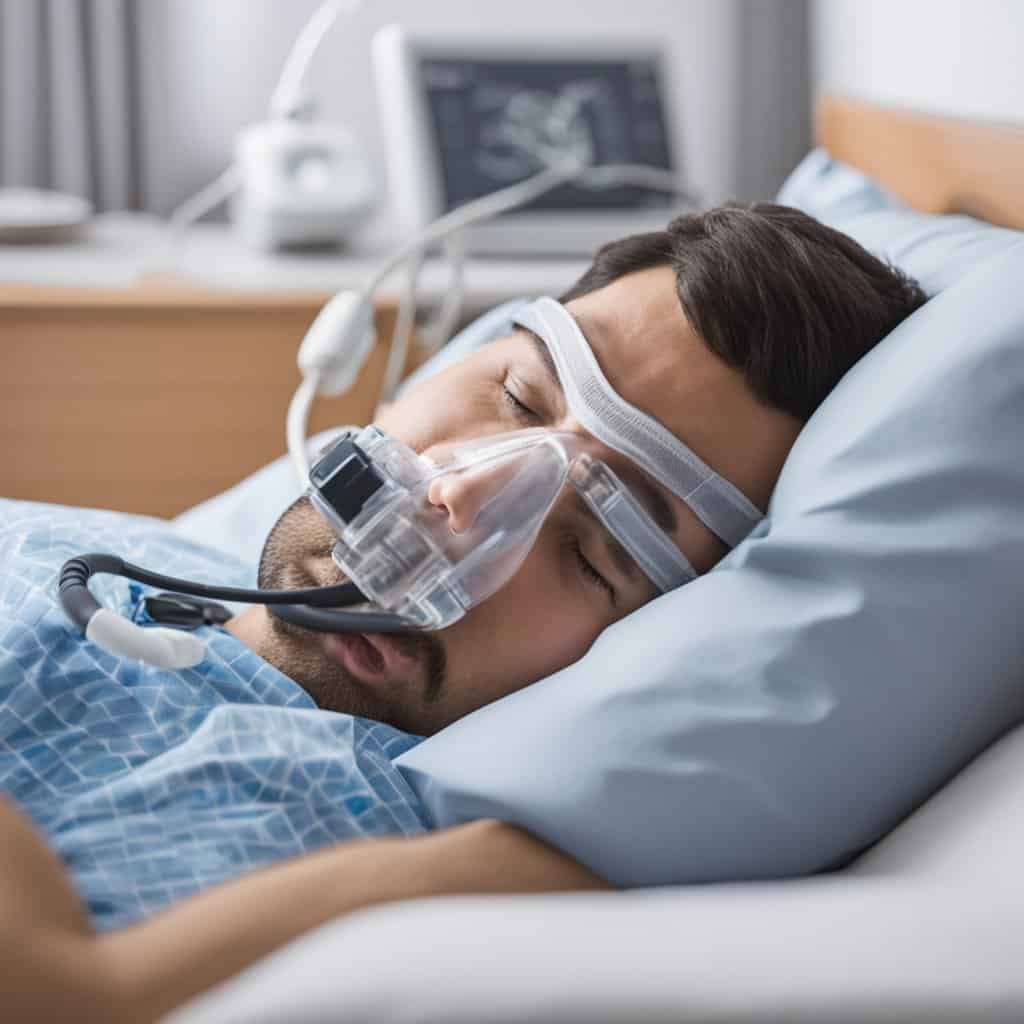Sleep apnea can make staying active challenging. This sleep problem causes breathing to stop during the night, leaving you tired and low on energy during the day. However, regular physical activity can help reduce sleep apnea symptoms and improve overall health.
Many people with sleep apnea worry about how it affects their workouts. You might feel too tired to exercise or worry about breathing issues, which are valid concerns. The good news is that you can still enjoy an active lifestyle with the right approach. With some minor changes, you can keep moving and feeling your best.

Understanding The Different Type Of Sleep Apnea And Symptoms
Sleep apnea is a severe sleep disorder that affects breathing during sleep, affecting your daily life and physical activities. Learning about its types and symptoms is crucial for proper diagnosis and management. There are three main types:
- Obstructive Sleep Apnea (OSA): This is the most common type, affecting 15-30% of men and 10-15% of women. It happens when your throat muscles relax and block your airway.
- Central Sleep Apnea: In this type, your brain doesn’t send proper signals to the muscles that control breathing.
- Complex Sleep Apnea: This is a combination of both obstructive and central sleep apnea.
Signs and symptoms of sleep apnea include:
- Loud snoring
- Gasping for air during sleep
- Morning headaches
- Excessive daytime sleepiness
- Memory loss
- Difficulty concentrating
If you experience these symptoms, it’s essential to consult a doctor. They may recommend a sleep study to diagnose sleep apnea. This test monitors your breathing, heart rate, and oxygen levels while you sleep.
Early diagnosis is key to managing sleep apnea and improving your quality of life. Treatment options can include lifestyle changes, breathing devices, or, in some cases, surgery.
Exercise Tolerance in Sleep Apnea Patients
Sleep apnea can affect your ability to exercise and perform athletically. It may reduce your energy levels and endurance during physical activities. So, if you have sleep apnea, you might find it harder to exercise, as poor sleep quality can decrease your exercise tolerance.
Your muscles may not get enough oxygen at night, making them weaker. This, in turn, can make physical activities more challenging. You might also notice decreased speed and reaction time, reduced endurance and a slower recovery after intense workouts. These effects can be especially noticeable in high-intensity sports or endurance activities.
However, treating your sleep apnea can help improve your athletic abilities, and with proper treatment, you may see better performance and recovery times.
Regular exercise can also help manage sleep apnea symptoms. It’s a two-way relationship – better sleep can improve your athletic performance, and more physical activity can lead to better sleep.
Managing Sleep Apnea
Sleep apnea can be managed through medical treatments and lifestyle changes. These approaches aim to improve your breathing during sleep and boost your energy for physical activities.
Continuous Positive Airway Pressure (CPAP) therapy is a standard treatment for sleep apnea. It uses a machine to deliver air pressure through a mask, keeping your airway open while you sleep.
Other options include oral appliances that reposition your jaw or tongue to maintain an open airway. Surgery may sometimes be recommended to remove excess tissue or reposition structures in your throat. Your doctor might suggest using a positional therapy device. This helps you avoid sleeping on your back, which can worsen sleep apnea symptoms.
Weight management also plays a crucial role in reducing sleep apnea symptoms. Losing even a small amount of weight can make a big difference in your breathing at night. Regular exercise can help you manage your weight and, in turn, improve your sleep quality. Aim for at least 150 minutes of moderate-intensity aerobic activity per week. Consider practicing yoga or throat exercises. These can strengthen the muscles in your upper airway, potentially reducing sleep apnea symptoms.
Avoid alcohol and sedatives before bedtime, as these substances can relax your throat muscles and worsen sleep apnea. Lastly, establish a consistent sleep schedule. Going to bed and waking up at the same time every day can improve your sleep quality and daytime energy levels.
Strategies For Staying Active With Sleep Apnea
Sleep apnea can make exercise challenging, but staying active is crucial. You can adapt your routines and find ways to include movement in your daily life. Here are some helpful approaches to maintaining physical activity despite sleep apnea.
Start small by adding more movement to your regular routine. Take the stairs instead of the elevator when possible. Park farther away from your destination to get extra steps in.
During work breaks, do some simple stretches or take a short walk. Set reminders on your phone to stand up and move around every hour.
Consider active hobbies like gardening or dancing. These can be fun ways to stay moving without feeling like you are exercising. Walking a dog or playing with kids are also great options.
Try to do household chores more actively. Vacuum with more vigour, or do some squats while folding laundry. Every bit of movement counts!
Look for low-impact activities that are easier on your body. Swimming, water aerobics, and yoga are excellent choices. These exercises can improve your fitness without putting too much strain on you.
Start with short workout sessions and gradually increase the duration. Even 10-15 minutes of exercise can be beneficial. Listen to your body and rest when needed.
Consider joining a support group or finding an exercise buddy. Having someone to motivate you can make a big difference. Check out your local gym, as many offer classes for people with health conditions.
Work with a physical therapist or certified trainer. They can help create a safe, effective workout plan tailored to your needs and will teach you the proper form to avoid injury.
Final Thoughts
While sleep apnea presents significant challenges to maintaining an active lifestyle, it is crucial to recognize that you can overcome these obstacles with the right strategies and support.
Adopting small yet consistent changes in daily routines can lead to meaningful improvements in energy levels and exercise tolerance. Moreover, building a supportive community through exercise groups or professional guidance can provide the encouragement necessary to stay committed to an active lifestyle.
What types of physical activities are recommended for individuals with sleep apnea?
Aerobic exercises like walking, swimming, and cycling are great for people with sleep apnea. These activities help improve cardiovascular health and can lead to weight loss, which may reduce sleep apnea symptoms.
Strength training is also beneficial. It can help build muscle mass and boost metabolism, potentially aiding in weight management.
Are there specific throat exercises that can alleviate symptoms of sleep apnea?
Specific throat exercises can help. Tongue exercises, such as pushing your tongue against the roof of your mouth, can strengthen muscles that keep airways open.
Singing or playing wind instruments can also strengthen throat muscles. These activities work the soft palate and upper airway muscles.
Can certain exercises worsen the condition of sleep apnea?
High-intensity exercises close to bedtime might worsen sleep apnea symptoms. These activities can increase alertness and make it harder to fall asleep.






